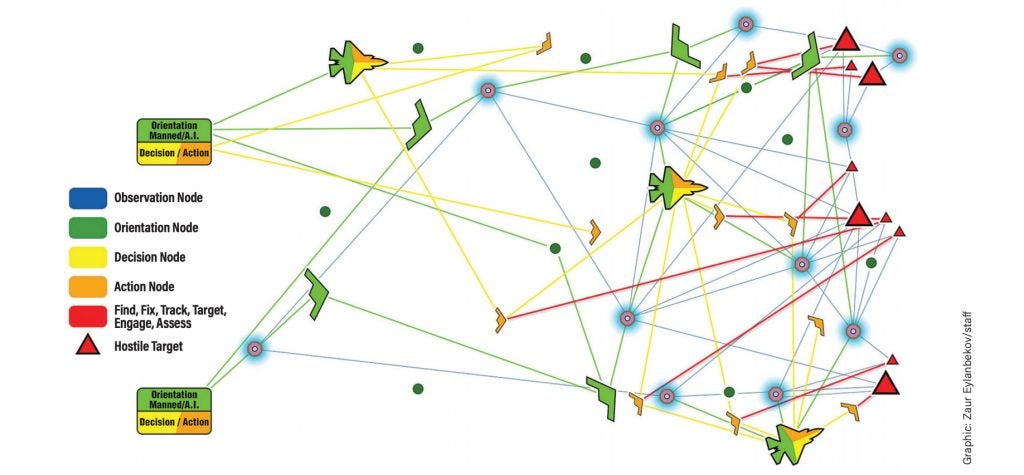Darpa Kill Web

Distributed Kill Chains O’DONOUGHUE ET AL. I n Mosaic warfare, individual warfighting platforms are assembled—like the ceramic tiles in mosaics—to make a larger picture or, in this case, a force package. The Defense Advanced Research Projects Agency (DARPA) is developing this novel warfighting construct to acquire, field, and employ forces. WARFARE EVOLUTION BLOG: By now, you know the kill web is a dynamic networked 'system of systems,' that can act (offensively or defensively) at the speed of computers against our enemy's tactics and strategies on the battlefield. There are a number of technical problems to be solved in communications, computer architectures, sensors, and software, but the engineering brainiacs. WASHINGTON: In a 5 to 0 sweep, an AI ‘pilot’ developed by Heron Systems beat one of the Air Force’s top F-16 fighter pilots in DARPA’s simulated aerial dogfight contest today. DARPA has unveiled Memex, which can be used to reveal what is hidden on the dark web, and pursue criminal groups of interest – and perhaps control or even kill the dark web for good. Feds Unveil New Surveillance Tool Developed by DARPA that Could Kill the ‘Dark Web’. And now, DARPA, the Pentagon’s secretive Defense Advanced Research Projects Agency, has developed a surveillance tool known as “Memex” that can be used to reveal what is hidden on the dark web, and pursue criminal groups of interest – and perhaps control or even kill the dark web for good.

Software-defined tactics are the key to quickly adding capabilities to different assets that are supposed to work together. It’s kill chain vs kill web for acquisitions.
In the kill chain – you devise a new weapon for a shooter, then figure out the sensor you need for the ISR node, then you figure out the network that makes the most sense for data transmission, then you write the messages you’ll send from sensor to shooter. After that, you have to try to sequence all the capabilities so that they arrive roughly at the same time.
Darpa Kill Web
Then when you add a sensor or a weapon, you have to teach the sensor asset what the new weapon brings to the table, or vice versa, and how they can maximize it. It’s hard for a community to get good at operating their own new sensors or weapons. It’s harder to get good at helping another community employ their capabilities.
Snai Darpa Kill Web
All of that adds so much time to acquiring and fielding new capabilities, so you end up buying weapons and sensors much slower than the pace of what is technologically possible.
In the kill web – you buy whatever improves your capability as a sensor or a shooter. Period. If there isn’t a perfect network to transmit information right away, it’s okay. Just write a software-defined tactics application that can leverage information from a basic data-link, has some basic modeling assumptions, and can give the task force a good, ad hoc plan that gets to a local maximum solution. The force can figure out the absolute best way to work together as they experiment, we just need an acceptable way to work together that can get the ball rolling.
We actually just did this for a new sensor/weapon combination in less than 20 hours of software development. The application we fielded solved the entire coordination problem for a completely new concept and optimized the sensor/shooter team. It lets the sensor act as a cloud processing node for the team, even if the human in the sensor aircraft isn’t really an expert in what the shooter brings to the table.
Darpa Kill Web Camera

Darpa Kill Web Browser
This process means the limiting factor in technology adoption is not the acquisitions process as is typical, but the actual science.